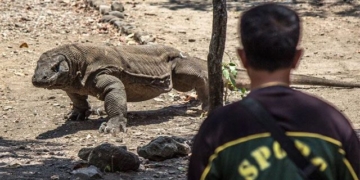The International Space Station (ISS) is ready to install upgraded solar panels after two NASA astronauts completed a nearly 7-hour spacewalk on March 15.
Kayla Barron and Raja Chari, members of Expedition 66, inspected the foot placement and mounting brackets at the base of one of the eight original solar arrays that provide power to the space station, preparing the area for the installation of a new solar panel system called ISS Roll-Out Solar Array (iROSA) in the future. Their task was to deploy the support structure for the third new solar array, which will be the first installed on the right side of the ISS’s main frame.

Astronauts Kayla Barron and Raja Chari conducting a spacewalk. (Photo: NASA).
Barron and Chari began their spacewalk at 8:12 PM on March 15, Hanoi time, dressed in protective suits known as Extravehicular Mobility Units (EMU) and connected to the station’s power supply. The duo exited the U.S. Quest airlock, carrying the necessary components and tools for the installation process, and moved to the work area on the right side of the orbital assembly.
The solar panels on the ISS were designed with a lifespan of 15 years in orbit. Although all are still operational, they are beginning to show signs of degradation in power production. The new iROSA panels are being installed to partially replace the old solar arrays. Once installed, iROSA will increase the total power output of the ISS from 160 kW to 215 kW. This power upgrade is crucial for the ISS to continue operating until at least 2030, while also supporting commercial activities on the station.
In addition to ensuring the ISS has sufficient power, the iROSAs also serve as a test for NASA as it prepares to deploy the Artemis Gateway station orbiting the Moon. The planned solar arrays for the Gateway will be longer but will still utilize similar technology developed by Redwire.
Barron and Chari completed the preparations for installing the iROSA one hour ahead of schedule. They concluded their spacewalk by inspecting the Alpha Magnetic Spectrometer (AMS), a cosmic ray detector that underwent several repairs in 2019. The spacewalk ended at 3:06 AM on March 16, Hanoi time, lasting 6 hours and 54 minutes.
This was the second spacewalk of the year and the 247th Extravehicular Activity (EVA) aimed at supporting the assembly, maintenance, and upgrades of the ISS since 1998. Another spacewalk is scheduled for March 23 to install coolant hoses, electrical wires, and data cables, replacing a camera.




















































